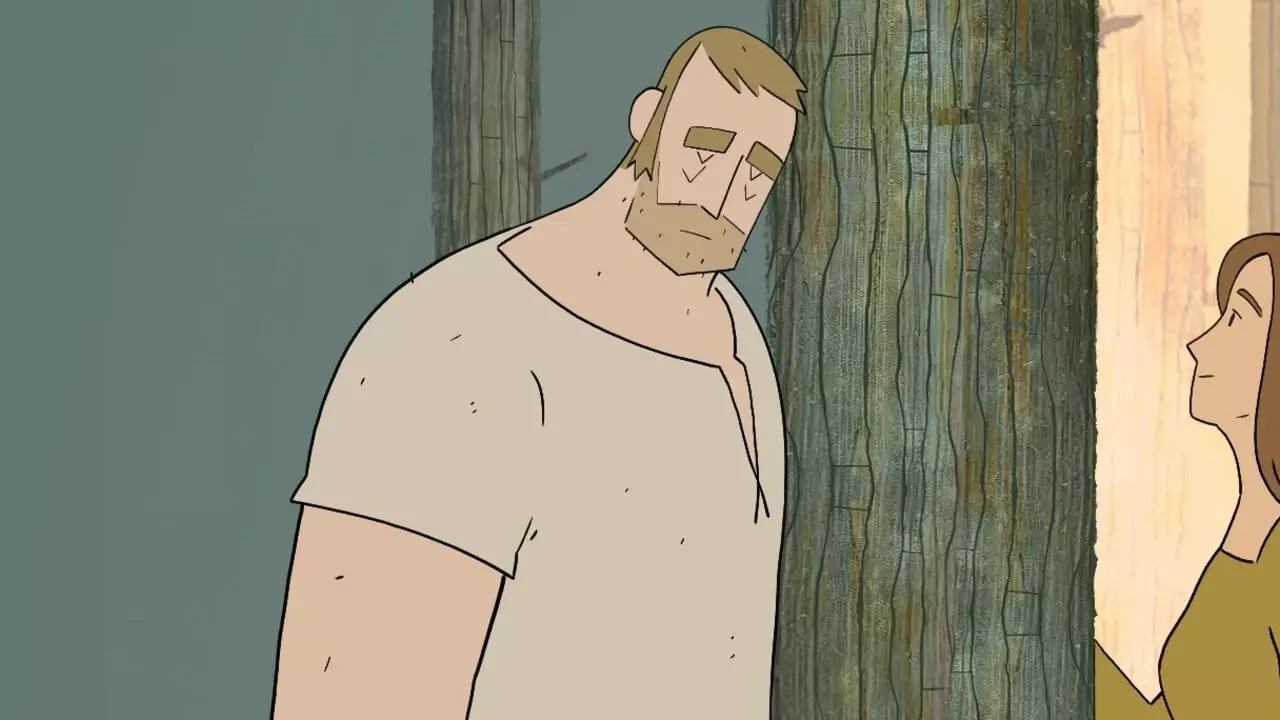The word ‘game’ usually conjures up images of joy and lightheartedness, suggesting a world of entertainment that allows players to engage in playful experiences. However, one might not immediately associate this definition with games that delve into deeper emotional territories. Such is the case with “Pine,” a title that juxtaposes whimsical connotations with a more somber exploration of grief and nostalgia. The subtitle of the game, “A Story of Loss,” immediately sets a tone that indicates this venture will tackle themes far removed from mere frivolity. It beckons players to engage not in traditional gameplay mechanics but rather an introspective journey through the lens of loss.
At first glance, one might anticipate traditional platforming or action-driven gameplay mechanics. Instead, players are introduced to an unnamed protagonist inhabiting a secluded life in the woods, engaging in mundane activities like chopping wood and cultivating a small garden. While these actions initially seem engaging and relatable, the execution falters, particularly when examined through the lens of player interaction. The touch controls are designed to simulate the protagonist’s labors, demanding gestures that mirror real-life tasks. However, while this approach can be immersive, it often feels overly simplistic and somewhat tedious. Rather than feeling like an engaging simulation of survival, these mechanics may at times feel more laborious than enjoyable.
Using a controller can further strip the game of its potential vibrancy, reducing interaction to a series of monotonous button presses. In this incessant repetition, players might find themselves longing for more excitement, but the game deliberately leans into this sense of unyielding monotony. The allure quickly fades as players cycle through interactions that lack meaningful variation, offering a sense of frustration rather than engagement.
Visual and Auditory Experience: An Artistic Undertone
Despite the gameplay shortcomings, “Pine” excels in its visual and auditory storytelling. The art is striking, encapsulating a serene yet melancholic atmosphere that mirrors the protagonist’s internal conflict. The imagery is haunting yet beautiful, inviting players to immerse themselves in its world. Additionally, the soundtrack offers a poignant accompaniment to the visuals, rhythmically ebbing and flowing to capture the essence of the protagonist’s fractured emotional state. This auditory landscape enhances the game’s allure, inviting reflection and underscoring the thematic elements of mourning and helplessness.
However, this artistic merit often exists in stark contrast to the gameplay experience. The maze of emotions and introspection is disrupted by frequent puzzle segments and interactions that, while they may intend to enhance engagement, often risk interrupting the narrative flow. This inconsistency raises questions about the effectiveness of blending gameplay with heavier themes, as players might struggle to find a harmonious rhythm between exploration and narrative progression.
Pine ultimately aims to encapsulate the experience of grief, presenting a portrait that some will find relatable and others may reject. The game invokes a teaching about the nature of loss: its ability to weigh heavily on one’s existence while simultaneously leading one to persist. Nevertheless, one’s interpretation of the story can be deeply personal and varied. Players seeking resolution may find discontentment in the protagonist’s journey, as the game communicates a message that urges letting go rather than fully processing one’s sorrows.
At its core, “Pine” can easily be misconstrued as a mere gardening simulator, albeit one tinged with melancholy. This juxtaposition—inviting players to confront the intersection of past and present, and to reflect on their emotional landscapes—can lead to discomfort and resilience. For those willing to delve into its depths, “Pine” offers a thought-provoking and impactful exploration of loss. Yet, for others, the experience may come off as slow-moving and overly melancholic, raising the question of how effectively video games can handle such poignant themes.
“Pine” stands as a distinctive entry within the realm of video games, compelling players to grapple with the complexities of loss and resilience. The visual and auditory artistry captures a haunting beauty, yet the simplistic gameplay mechanics may alienate some. Ultimately, this title serves as a reminder of the vast spectrum of experiences that video games can offer—both delightful and painful. If one is ready for an emotional exploration that demands patience and introspection, “Pine” could be a rewarding, albeit challenging, journey.


Leave a Reply